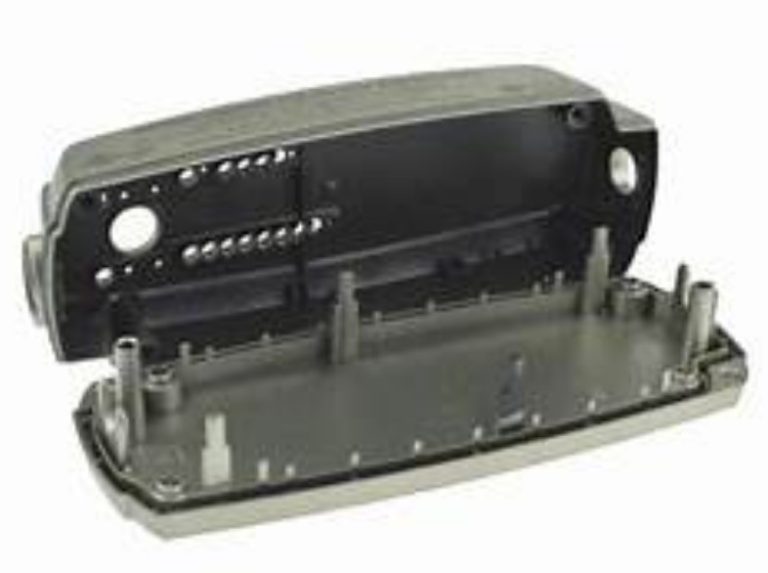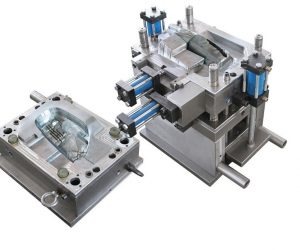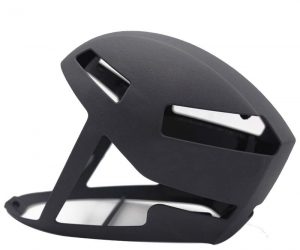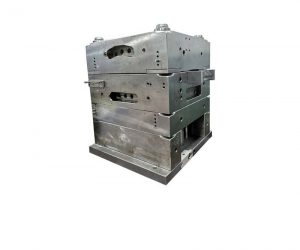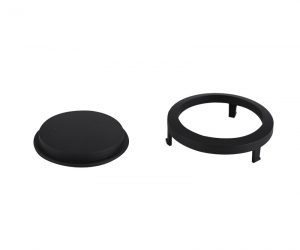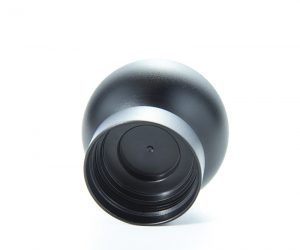Let me give you a detailed overview of the hopper in an injection molding machine. This part is crucial for the whole process. I'll explain what the hopper does, how it's designed, and some tips to use it effectively.
First, let's talk about what the hopper does in the injection molding machine. The hopper is where plastic raw materials are stored and then transported to the injection device. It makes sure these materials get from the supply point to the injection unit smoothly for molding. How the hopper is made and set up is key to keeping the material flowing steadily and making production efficient.
When designing a hopper, there are several important things to think about. One is how much material it can hold. Based on how much you need to produce and the type of materials you're using, picking the right size ensures you have a steady supply without running out or having too much at once. Another thing is its shape and structure. These should help the materials flow well and be evenly distributed. Also, consider the material of the hopper and how resistant it is to wear and tear, so it lasts long and works well.
Here are some tips for using a hopper effectively: First, regularly check and maintain the hopper. Clean it inside to remove any dirt or leftover material, which helps keep everything pure and flowing smoothly. Second, control the temperature and humidity based on your materials' needs. Proper conditions prevent the materials from breaking down or clumping together, ensuring good molding quality. Lastly, adjust the feeding speed and pressure correctly. Match these settings to your product requirements and mold design for a smooth process and precise dimensions.
In summary, the hopper is a vital part of the injection molding machine. By understanding its role, design, and following some best practices, you can use it effectively to boost productivity and quality.
What is a Hopper in Injection Moulding?
A hopper is essentially a container or reservoir used in injection moulding. It holds the raw materials, typically plastic pellets or granules, and feeds them into the machine's barrel. Usually, it's positioned above the machine and comes with a mechanism like a screw or gravity feed to move the material into the machine's feed mouth. Sometimes, hoppers also have extra features such as sensors or level indicators to monitor and control the material supply.
The primary function of the hopper is to keep the production process running smoothly by ensuring a steady flow of material. This prevents any shortages or disruptions that could lead to defects or inconsistencies in the finished parts. Plus, if you need to switch to a different colour or material, the hopper makes this easy, adding more flexibility to your production line.
How Does a Hopper Work in Injection Moulding?
Injection moulding can have different use cases for hoppers depending on the specific requirements of the production process, which can vary from case to case. Some common examples include:
- Batch Manufacturing: Hoppers hold enough material for continuous production runs, ensuring a consistent supply without interruptions. This is in contrast to traditional production methods, which use smaller quantities of material for each batch.
- Material Blending: Hoppers can be fitted with mixers or blenders to combine different materials or additives before they are fed into the moulding machine. This allows the creation of customised blends and the achievement of desired material properties.
- Material Drying: Hoppers can be equipped with dryers or dehumidifiers to remove moisture from the plastic material before it enters the moulding machine. This prevents moisture-related problems such as splay marks, bubbles, or degradation of the material.
Design and Configurations of the Hopper in Injection Moulding
The design and configuration of the hopper in injection moulding depend on various factors, such as the type and quantity of material being used, the size and shape of the moulded parts, and the speed and efficiency of the production process. Some common design features and configurations of hoppers are:
- Shape: The shape of the hopper can affect how well the material flows through it. A conical or tapered shape is preferred over a cylindrical or rectangular shape, as it reduces dead spots and promotes uniform flow. The angle of inclination of the hopper should also be considered, as it affects how fast or slow the material moves through it. A steeper angle results in faster flow, while a shallower angle results in slower flow.
- Size: The size of the hopper determines how much material it can hold at a time. A larger hopper can accommodate more material and reduce the frequency of refilling, but it also takes up more space and may cause more heat loss. A smaller hopper can save space and minimise heat loss, but it also requires more frequent refilling and may cause more fluctuations in material flow.
- Material: The material of the hopper should be compatible with the plastic material being used and resistant to wear and tear. Common materials for hoppers include stainless steel, aluminium, plastic, or glass. Stainless steel is durable and easy to clean but may be heavy and expensive. Aluminium is lightweight and inexpensive but may corrode or dent easily. Plastic is cheap and versatile but may deform or crack under high temperatures or pressures. Glass is transparent and allows visual inspection but may break or shatter if dropped or hit.
- Feed Mechanism: The feed mechanism is how the material is transferred from the hopper into the barrel of the injection moulding machine. There are two main types of feed mechanisms: screw feed and gravity feed. Screw feed uses a rotating screw to push the material forward into the barrel. Gravity feed uses gravity to let the material fall into the barrel through an opening at the bottom of the hopper. Screw feed offers more control and accuracy over the material flow but also consumes more power and requires more maintenance. Gravity feed is simpler and cheaper but also less precise and reliable.
Tips and Best Practices for Using the Hopper in Injection Moulding
To use the hopper in injection moulding effectively, there are some tips and best practices to follow, such as:
- Keep the hopper clean and free of dust, dirt, or foreign objects that could contaminate the material or clog the feed mechanism.
- Keep the hopper dry and avoid exposing it to moisture or humidity that could affect the quality or performance of the material.
- Keep the hopper full and avoid running it empty or low, as this could cause air pockets or inconsistent material flow that could result in defective or incomplete moulded parts.
- Keep the hopper at a suitable temperature and avoid overheating or underheating it, as this could affect the viscosity or stability of the material.
- Keep the hopper compatible and avoid mixing different types or colours of materials in the same hopper, as this could cause inconsistency or contamination in the moulded parts.
Conclusion
The hopper in an injection moulding machine is a crucial part. It holds and feeds plastic into the barrel. This ensures smooth, uninterrupted production by maintaining a steady flow of material. The hopper also offers more flexibility. It allows easy switching of materials for new colours or substances.
The design of the hopper depends on several factors. These include the type and amount of material used, the size and shape of the parts being moulded, and the speed and efficiency of the production process.
To use the hopper effectively, follow these tips: keep it clean, dry, full, at a suitable temperature, and compatible with the material being used.
